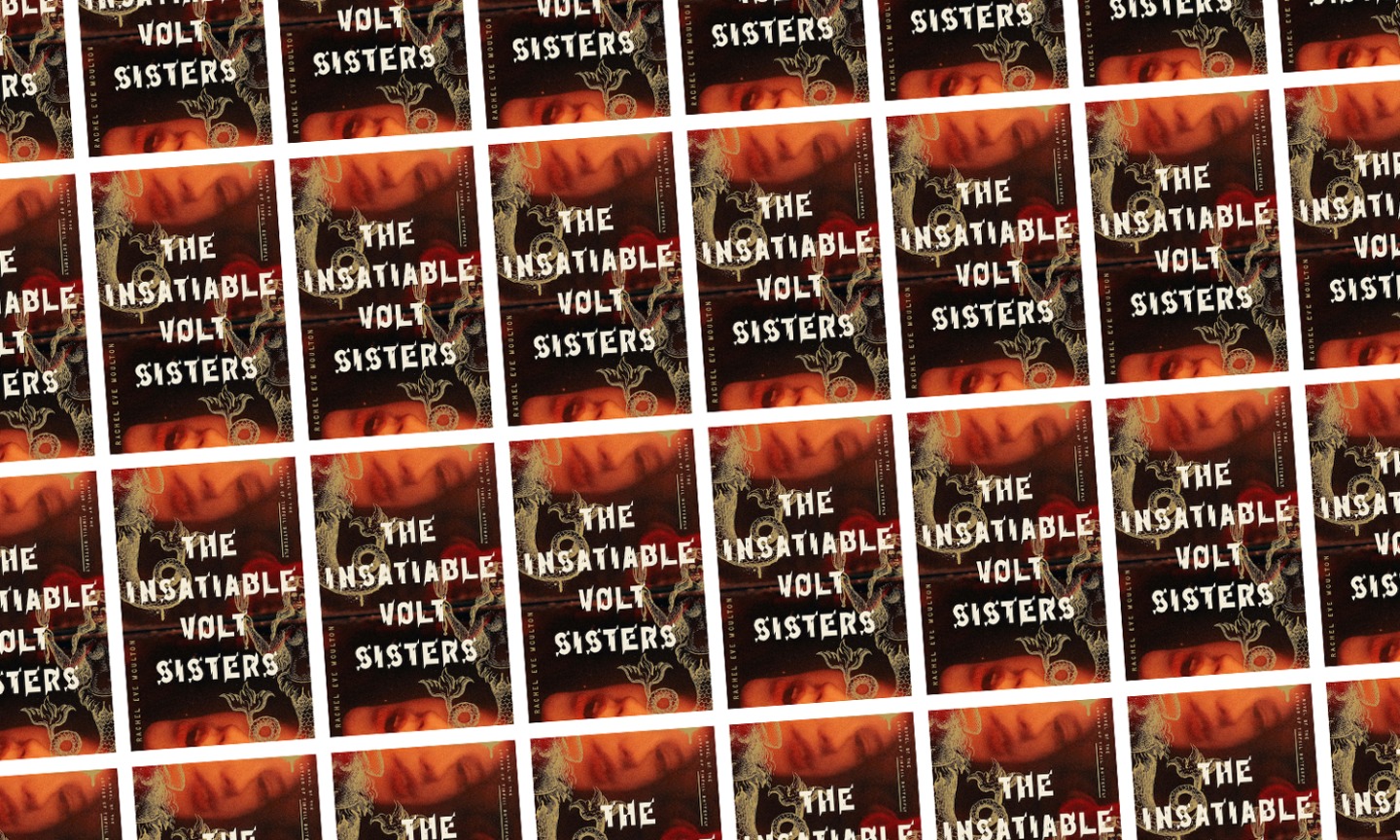
Atmosphere Masterclass: The Insatiable Volt Sisters by Rachel Eve Moulton
Rachel Eve Moulton’s second novel, The Insatiable Volt Sisters, is a chilling and sprawling novel that atmospherically delivers while making the reader feel like they are standing in an ambiguous zone. It’s both a Lovecraftian nightmare about water demons who prey on women and their pain, a gothic novel about family traumas and secrets (including haunted, crumbling mansions), and a horror story about shapeshifting, ghosts, and making deals with demons. “The Insatiable Volt Sisters” eschews categorization, and in the process delivers a gripping, haunting narrative in which the unsaid and all that is unseen becomes incompatible with everything on the page. The content is just as important.
Back in the summer of 1989, Henrietta and Beatrice (BB) Volt were growing up on Fowler Island, a small piece of land on the shores of Lake Erie that had been in their family for generations. The sisters ran together all day, dreaming of the future, and swimming in the quarry pond, which their grandfather dug when he blasted his way through the rocks, making it deeper than it looked. Unfortunately, their plans were cut short when their parents (only Henry’s biological mother) separated and did the same to them in the process.
Ten years later, Henry received a call from BB: their father had passed away, and Henry had to return to Fowler Island for the funeral. But Henry didn’t want to go back. Fowler Island wasn’t a terrible place to grow up, but it was far from perfect. Their father was a poet, moody and always locked in his study, typing away. Plus, the house was haunted, their mother was always sad, there was danger in the quarry pond, and the island had a long history of missing women, including some from the Volt family. Henry managed to move on with her life, but the island and the house where she grew up, and everything she remembered and didn’t, were never far from her mind. Despite her discomfort, Henry returned to Fowler with her mother, and the two soon found themselves in the grip of the island, feeling a strange and powerful attraction to Fowler while longing to leave. They dealt with BB’s desire to stay on their inherited property and revamped it to erase its dark history.
The foregoing synopsis has only scratched the surface of the novel. A lot of things happen in “The Insatiable Volt Sisters.” The story is told not only from the perspective of Henry and BB, but also from the perspective of Henry’s mother Carrie and the island’s “curator,” Sonia, who is in charge of the museum. While there are several men in the story—the first Volt, BB and Henry’s father, the sisters’ love interest on the island, etc.—the novel is narrated by and centered on women. The result is a narrative about sisterhood, but also about motherhood, grappling with the gender roles society insists on assigning to women, their vulnerability on the run, and the many women who disappear on the island, often leaving behind some of their belongings or, in some cases, body parts. The strength and resilience displayed by the women in this novel give it a feminist feel that rises up beneath the surface, showing how much time and care went into crafting the story.
Moulton deftly mixes several elements here, but horror is perhaps the most noteworthy. Yes, there is great dialogue, some unexpected moments of humor, the relationship between Henry and BB, sometimes reminiscent of Blackwood in Shirley Jackson’s classic “We’ve Been Living in the Castle,” deep and meticulous prose that is both elegant and powerful—but in this novel, darkness predominates. Moulton clearly understands that showing, detailing, and explaining sometimes get in the way of horror, and she lets many parts of the story exist in unsettling gaps between shadows, dreams, and things only half-seen in the middle of the night. There are many such unseen things. There is a creature/demon that lives at the bottom of a quarry pond connected to Lake Erie. It feeds on grief and has a direct relationship to the missing women on the island. There are also a lot of ghosts trapped in the house, and by the end of the novel, the house starts shaking. In the end, the sisters may or may not be someone else, just like their father, who died with an intact skin in the shape of a monster. Everything is related, but it would take almost 464 pages of fiction to understand how and why.

When Moulton’s The Tin Foil Butterfly came out in 2019, I read it and reviewed it, and I was blown away because the atmosphere was great and the novel managed to make me uncomfortable. I’m cautiously optimistic about whatever she has to say next, but I understand that a completely different story doesn’t necessarily have the same force in terms of atmosphere. I was wrong. Although completely different, “The Insatiable Volt Sisters” is every bit as great as Moulton’s firstnovel and surpasses it with game-changing elements and disturbing subplots and events that don’t leave you after you’ve turned the last page. It will still leave a deep impression on your mind. An impressive debut novel (shortlisted for the Shirley Jackson Award) is hard to follow, and Moulton has done a fantastic job, which makes me all the more excited for whatever she writes next.
Perhaps the strongest thing about horror fiction is that it can bring everything together under one roof, allowing disparate elements to function while still delivering a very cohesive narrative. In “The Insatiable Volt Sisters,” monsters, demons, and ghosts frolic with grief, dark legacies, dead women’s histories, and deep and complicated sisterly relationships that are all about love before morphing into something else, all in the spotlight for equal time. Moulton is a talented storyteller with a knack for setting the mood, and Fowler Island is the kind of place that keeps you coming back. You should step on it because the story is worth the risk, but don’t be surprised if it doesn’t let you go.







Tagged "The Light at the End of the World", Historical Fiction, nationalism, Siddhartha Deb, social upheaval